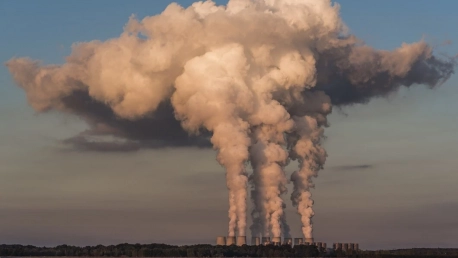In the crusade to mitigate the impacts of global warming, the necessity of imposing a price on carbon emissions is increasingly recognized as a pivotal strategy. Mirroring the profound influence that oil prices wield over global economics and industrial activities, a carbon charge presents a pragmatic financial incentive for change. Such a carbon pricing mechanism, whether in the form of a tax or through emissions trading systems, could serve as the lever that tilts the global economic balance toward more sustainable and eco-friendly practices, while providing a deterrent against carbon-heavy activities. However, the implementation of these systems is still in its infancy, covering less than a fifth of global emissions and lacking the necessary vigor to comply with the Paris Agreement stipulations. This calls for an enhanced global commitment to establish a carbon pricing framework that is both effective and equitable.The call for urgent action is underscored by climate science, warning that the window to avoid crossing the perilous 2°C threshold of global warming is rapidly closing. Recognizing this urgency, international bodies, including the International Monetary Fund, advocate for differential carbon price floors that vary according to a country’s economic stature. This tiered approach reflects the diverse capabilities and responsibilities of nations and is geared toward fostering a collective effort in reducing emissions while considering economic disparities.
Economic Incentivization
Harnessing Markets to Drive Change
By putting a cost on carbon emissions, markets can be harnessed to reflect the true environmental cost of carbon-intensive industries. This serves as a potent deterrent, naturally steering the economy toward greener alternatives. For industries, the imperative to innovate surges as they seek to minimize their fiscal liabilities, which directly correlate with their carbon footprint. Measures such as energy conservation, adoption of renewable energy, and investment in green technologies become financially prudent decisions. What transpires is a transformative shift in investment flows, redirecting capital from polluting industries to sustainable ventures, consequently galvanizing the green economy.
Beyond Pricing: The Role of Regulations
While the market-based approach of carbon pricing is pivotal, it alone cannot shoulder the burden of effecting sweeping environmental reform. High-quality regulations play an equally significant role, ensuring that environmental safeguards are in place to complement the price signal. This might encompass stringent emissions standards for vehicles, industrial plants, and stricter regulations on land use and deforestation. The duality of pricing and regulation creates an environment where sustainable practices are not just incentivized but become the de facto standard for economic activities.
Global Coordination
Establishing a Unified Carbon Pricing Framework
For carbon pricing to achieve its intended impact, it must be globally coordinated with a shared vision. Establishing a unified framework requires international cooperation, standardization of carbon pricing mechanisms, and ensuring compatibility across borders. This coordination would address current disparities in carbon prices and improve the credibility and transparency of emissions reduction. A global price floor, as suggested by experts, could serve as a common denominator, aligning diverse national policies and responses to the climate challenge with the collective urgency required.
Ensuring Equity and Environmental Integrity
As the fight against global warming intensifies, experts advocate for carbon pricing to steer economic activities towards sustainability. Acting as a financial deterrent, a carbon tax or emission trading systems could pivot the economic paradigm to favor green practices. Yet, current carbon pricing affects less than 20% of global emissions and falls short of the Paris Agreement goals, highlighting the need for a broader and more potent implementation.To effectively combat the looming 2°C global warming threshold, a tiered carbon price floor, as suggested by the International Monetary Fund, offers a viable solution. By adjusting prices to match national economic levels, this strategy aims to unify global reduction efforts while respecting countries’ differing capacities. An urgent, concerted, and equitable approach to carbon pricing is imperative for meaningful climate action.









